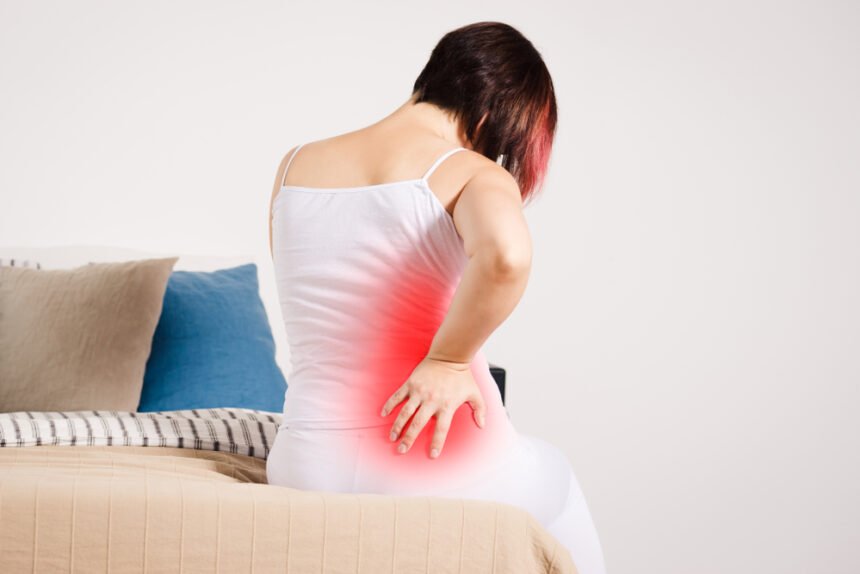The sciatic nerve is the largest nerve in the entire body, starting in the lower back and running through many locations throughout the lower body. The hips, legs, buttocks and feet are all connected to the sciatic nerve, making it an important part of the body’s systems of movement and comfort. Often, sciatic nerve pain or sciatica is characterized by burning, sharp pain or numbness in one or more of the affected areas.
Often, this can be tied to labor, childbirth, and pregnancy. Whether you think you may be experiencing sciatica as a result of your postpartum experience, or you have past experience with it and childbirth has impacted it somehow, there are many resources, treatment options and different ideas to explore to get informed and start healing.
Of course, consulting with your doctor is imperative, especially when dealing with conditions in conjunction with pregnancy and childbirth. It’s important to make sure all the doctors and specialists in the picture have a keen awareness of your medical history so they can help you in your health journey to the best of their ability.
1. Symptoms
There are a wide variety of symptoms that can signal sciatica. While some of them are often associated with pregnancy and childbirth, some are not. It can often be difficult to tell if certain symptoms denote a condition or are simply due to pregnancy discomfort, even if this isn’t your first pregnancy. Every experience is unique. That being said, it’s better to be safe than sorry.
Symptoms of sciatica can include:
- Back pain
- Aching
- Sharp pains
- Burning
- Numbness
- Cramps
- Weak muscles
- Fatigue
- Tingling or pins and needles sensations
These symptoms can pop up wherever your sciatic nerve reaches, though it mostly centralizes in the lower back, as that is the most concentrated place of sciatic nerve pain.
2. Getting a Diagnosis
Even if you’re not sure, it’s important to check with your doctor and get a professional opinion. Usually, your doctor will look at your medical history and give you a physical exam. They may send you to a specialist that focuses on spinal injuries, where you’ll likely discuss the possibilities in further detail there.
While sciatica is often diagnosed through CT scans, MRIs and x-rays, they aren’t required every time. Depending upon where you are in your pregnancy or childbirth journey, some of those tests may be utilized. If your doctor doesn’t feel comfortable administering those tests yet, they may diagnose you through other means or wait until it is appropriate.
3. Causes
Sciatica can come from a variety of sources, some of which can come into play during pregnancy or postpartum. Back problems like herniated discs, spinal stenosis or back injuries can cause sciatica through trauma, but sciatica can also come as a result of back pain or back stress from pregnancy. The additional weight on the front half of your body can cause shifts in how you carry yourself, which can put strain on your lower back.
In addition to the shift of pregnancy, giving birth can sometimes cause stress or injury through medical intervention or simply from strain. Regardless, it’s important to communicate the details of that to your doctor so they can provide you with the best care possible.
4. Natural Remedies
Depending upon the severity of your sciatica, you may be able to treat it in part ? or in full ? using natural remedies. Even if you’re exploring medical intervention, it’s often common practice to integrate physical remedies like exercises and physical therapy to aid in healing and pain reduction. Other physical remedies that often go along with medical intervention are things like using heat and ice.
In addition to physical remedies, there are other natural ways to treat sciatic pain and sciatica that can also be beneficial for postpartum life. Some of them can include:
- Gentle yoga
- Massage
- Essential oils
- Natural pain relievers
While these methods may not be the only thing you need to heal sciatica, they can be the first steps or beneficial steps in pain management during postpartum. You can even work with your doctor to continue to prioritize natural methods of healing in your treatment going forward.
5. Treatment Options
Sometimes, more medical intervention is required. Professional physical therapy can be a great start to this, and is customizable, and therefore safe during pregnancy and postpartum. However, there are also more medical options for those with persisting pain that disrupts the patterns of daily life. Endoscopic discectomy is a minor surgical option that involves only a small incision and removes the damage from the disc, whereas endoscopic foraminalplasty and endoscopic laminotomy are other surgical options that work to relieve the damage.
No matter what option you go with, medical and surgical procedures are often relieving and can even go along with natural remedies to help ensure that the pain doesn’t return.
Avoid Postpartum with Surrogacy
While postpartum recovery often involves managing physical stress and potential complications like sciatica, some families explore alternative paths to parenthood to bypass these challenges. Choosing to avoid postpartum with surrogacy can be an option for those who wish to expand their family without experiencing the physical demands and potential health issues that come with pregnancy and childbirth
Find Your Path
No matter what option works best for you, sciatica and sciatic pain doesn’t have to impact your life forever. You have mom activities to tend to, after all.

